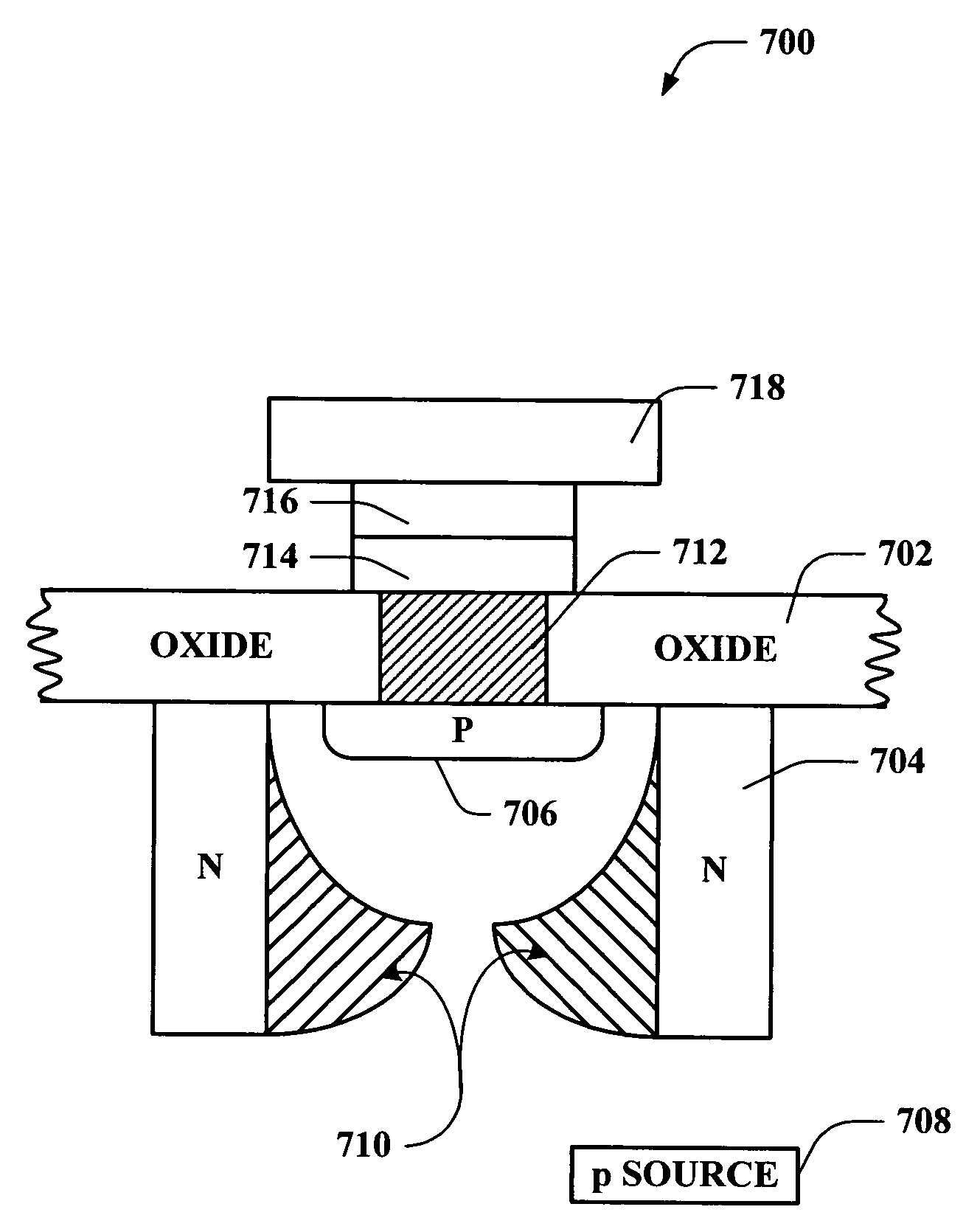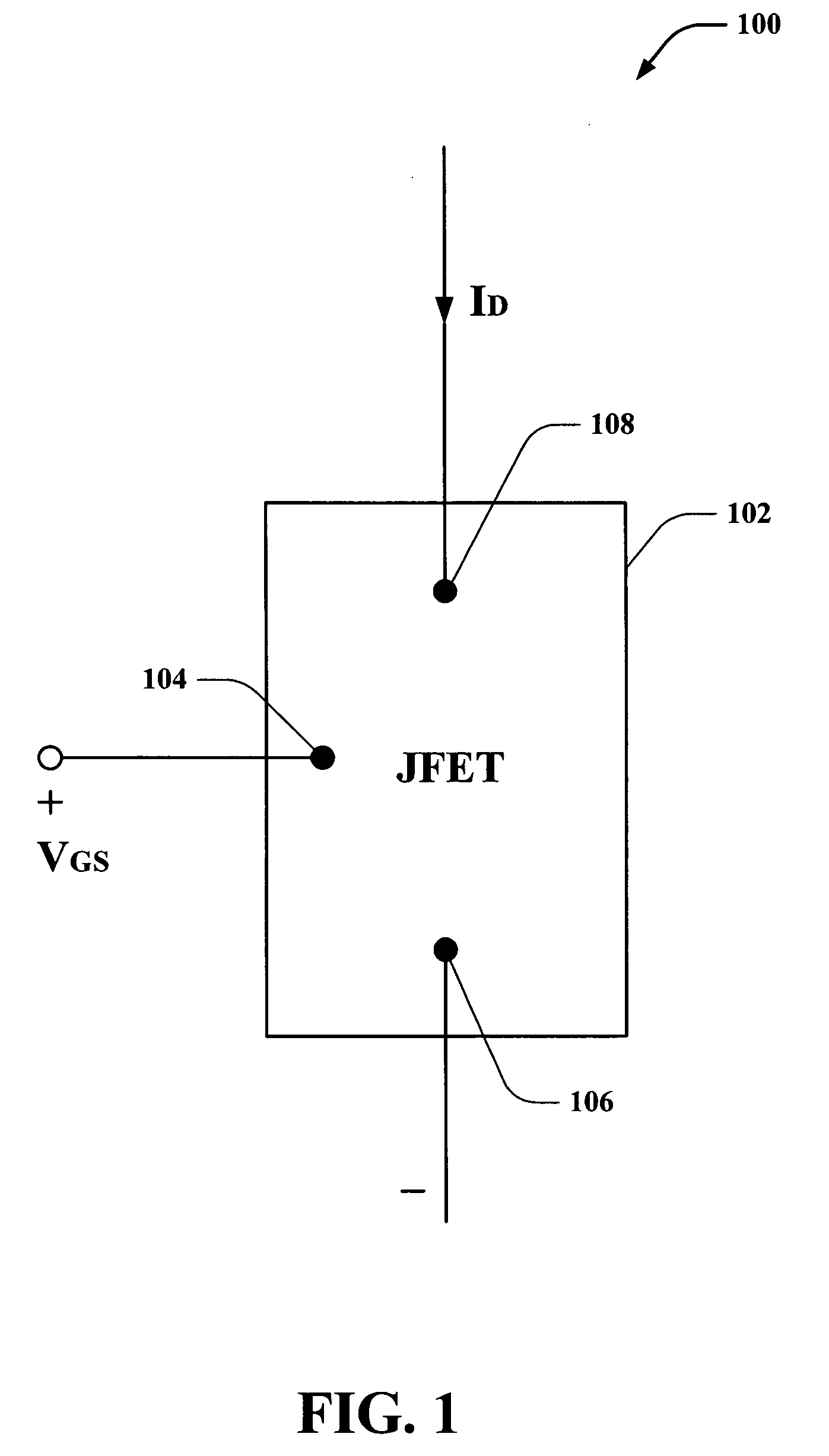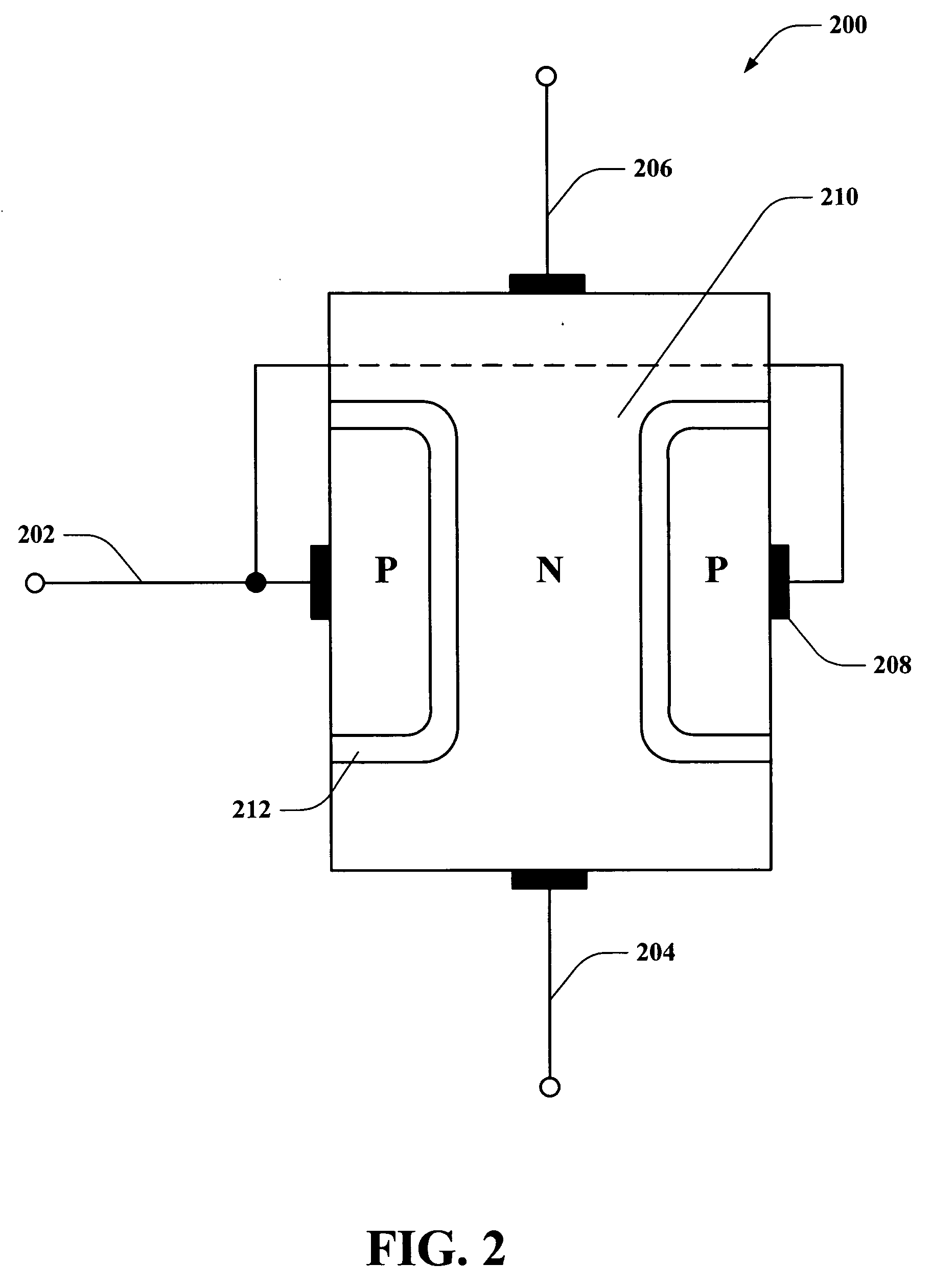Vertical JFET as used for selective component in a memory array
a memory array and vertical jfet technology, applied in the direction of semiconductor devices, electrical apparatus, transistors, etc., can solve the problems of not being particularly suited to the device, and reducing the brightness or brightness of the emitter, so as to facilitate the increase of the density of the memory device, improve the quality of the switching device, and reduce the bulkiness
- Summary
- Abstract
- Description
- Claims
- Application Information
AI Technical Summary
Benefits of technology
Problems solved by technology
Method used
Image
Examples
Embodiment Construction
[0024] The present invention will now be described with reference to the drawings, wherein like reference numerals are used to refer to like elements throughout. The present invention will be described with reference to systems and methods increasing memory density and switching device quality in a polymer memory array. It should be understood that the description of these exemplary aspects are merely illustrative and that they should not be taken in a limiting sense.
[0025]FIG. 1 is an illustration of a simple junction field-effect transistor (JFET) schematic 100 presented for exemplary purposes and to provide insight into JFET operation. A JFET is a three-terminal device that has numerous applications, many of which comprise providing a functionality similar to, and / or in place of, for example, a bipolar junction transistor (BJT). A FET differs from a BJT in that a BJT is a bipolar, current-controlled device whereas a FET is a unipolar, voltage-controlled device (e.g., amplifier, ...
PUM
 Login to View More
Login to View More Abstract
Description
Claims
Application Information
 Login to View More
Login to View More - R&D
- Intellectual Property
- Life Sciences
- Materials
- Tech Scout
- Unparalleled Data Quality
- Higher Quality Content
- 60% Fewer Hallucinations
Browse by: Latest US Patents, China's latest patents, Technical Efficacy Thesaurus, Application Domain, Technology Topic, Popular Technical Reports.
© 2025 PatSnap. All rights reserved.Legal|Privacy policy|Modern Slavery Act Transparency Statement|Sitemap|About US| Contact US: help@patsnap.com



